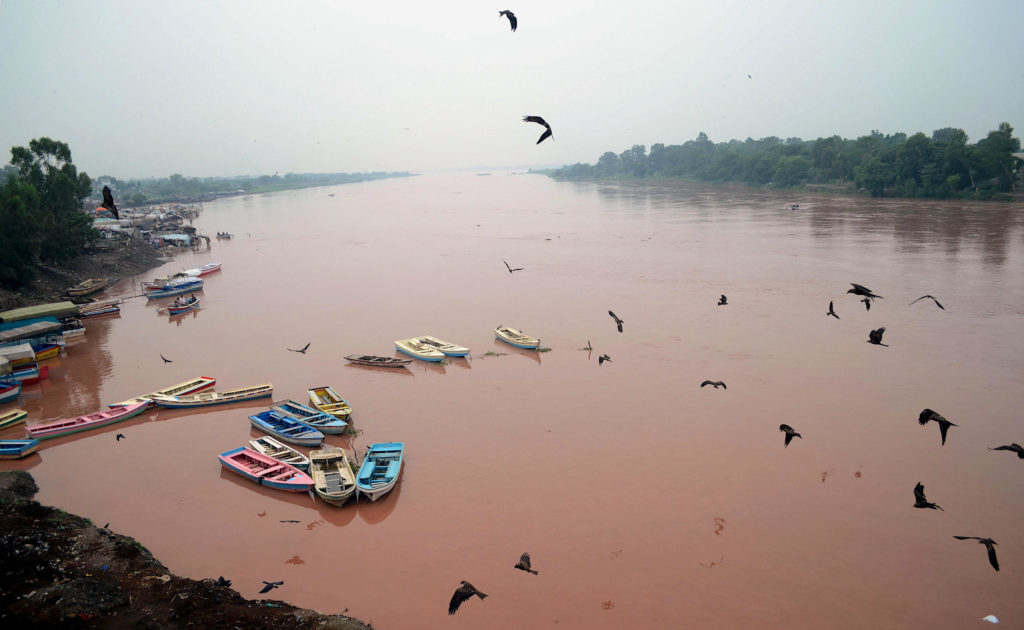DIALOGUE EARTH

Erum Sattar from Pakistan and Uttam Kumar Sinha from India discuss the Shahpurkandi dam’s implications, stressing the importance of collaboration under the Indus Waters Treaty.
As the Shahpurkandi barrage on the river Ravi in the Indian state of Punjab nears completion, there are fears in downstream Pakistan. The dam, proposed three decades ago, has the potential to irrigate 5,000 hectares of agricultural land in Punjab and over 32,000 hectares in Jammu and Kashmir on the Indian side. But the dam will stop any flow of river water to downstream Pakistan, with newspaper headlines being largely dominated by accusations of ‘water war-mongering’.
The Ravi is part of the six rivers of the Indus basin that are governed by the Indus Waters Treaty (IWT). Signed in 1960 between the two countries, the IWT is one of only two major transboundary water treaties in South Asia (the other being the 1996 Ganges treaty), considered one of the great successes of water diplomacy.
The Third Pole invited two experts – Erum Sattar of Pakistan and Uttam Kumar Sinha from India – to weigh in on what the development means for the IWT as well as the long-term impacts on the Indus basin in ecological terms.
Erum Sattar, Water law expert with a doctorate from Harvard Law School
The latest controversy over the Shahpurkandi Dam and its completion by India is akin to a ‘nothing burger’ — a controversy that rages for some time mainly on social media and a lot of talk about nothing. Reasonable people should meet it by responding with the request to ‘move along, please’, as there is nothing to see here. With that overall perspective laid out, it is important to dive briefly into the details of what the IWT does and does not allow.
The IWT remains to date the only treaty in the world that diverts and divides actual rivers and not their flows or specific amounts of water. It assigned the three western rivers of the Indus basin to Pakistan whereas the three eastern rivers were allocated to India. The main thing to know about this division is that it was meant to create certainty, so that after the conclusion of the treaty, both countries would become entitled to construct the infrastructure needed to undertake full utilisation of the waters of the rivers allocated to them.
Because water flows downstream, any flow that India did not previously utilise upstream within its territory would naturally flow down to Pakistan. In the case of the present dam and controversy, this is precisely what was happening with the flows of the Ravi that were not, until now, diverted upstream within India.
But just because the treaty allows maximum utilisation by the two countries of ‘their’ respective rivers does not mean that the countries should not reach agreement and make provisions for environmental flows – even if that means making addendums to the IWT.
As environmentalists have long pointed out, by not creating provisions for environmental flows, the hydrology and ecology of the three downstream eastern rivers is irreparably harmed. Moreover, the growing complexity and changing patterns of precipitation and river flow, as a result of accelerated glacial melt and climate change, make water management much more complex than was understood at the time the treaty was negotiated.
Rather than focusing on India’s creation of projects within its territory, Pakistan should take the opportunity to have a holistic conversation about what good neighbourly conduct entails given the realities of climate change. Pakistan should put together a proposal under Article 7 of the treaty that creates the basis for future cooperation along the Indus River system. It should share its best-use ideas with India and the world immediately. Given its dependence on judicious and forward-thinking management of the rivers of the Indus, this is the need of the hour. Anything else is a distraction.
For the purposes of gaining a clearer understanding of the present controversy, it is not important to dive into the intricacies of international water law and the competing concepts of no appreciable harm and equitable utilisation. Nor to directly address whether and to the extent there are specific and general reservations on Pakistan’s end as there have been through the long history of Indus negotiations about being the lower riparian to a large upstream neighbour on both the western and eastern rivers.
Every ‘crisis’ can be an opportunity. And right now, Pakistan as a vital custodian of the Indus should adopt a visionary, expansionist and positive approach. It should propose a plan focused on expanding cooperation across the Indus River Basin for long-term sustainability amid extreme climate change. This approach should encompass all human users and non-human species and ecology across Pakistan, India, Afghanistan and China. This way, Pakistan can be on the right side of history even before international water law and perhaps other co-riparians agree to manage the basin for present and future vitality. Being right and visionary is important, while actively working towards the realisation of hope for the virtuous alignment of geopolitics and national interests.
Uttam Kumar Sinha, senior expert on transboundary rivers, author of Indus Basin Uninterrupted: A History of Territory and Politics from Alexander to Nehru
Dialogue Earth for more
